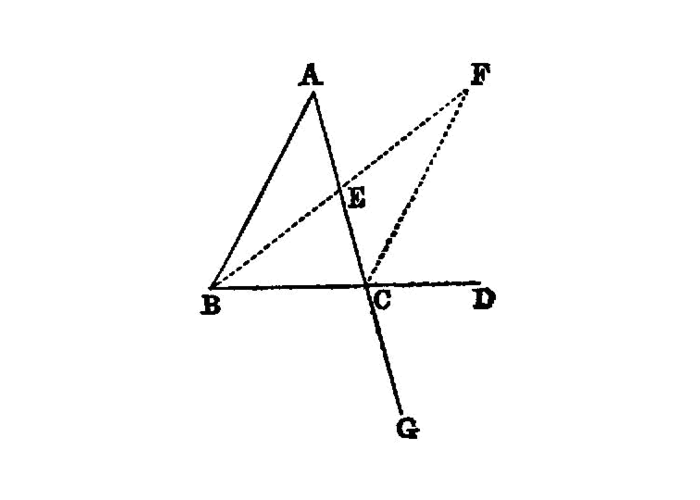Proposition I.16

In any triangle, if one of the sides be produced, the exterior angle is greater than either of the interior and opposite angles.
Let ABC be a triangle, and let one side of it BC be produced to D;
I say that the exterior angle 1 ACDis greater than either of the interior and opposite angles 2 CBA, BAC.
Let AC be bisected at E I.10, and let BE be joined and produced in a straight line to F;
let EF be made equal to BEI.3, let FC be joined I.post.1, and let AC be drawn through to G 3 I.post.2.
Then, since AE is equal to EC, and BE to EF,
- the two sides
AE,EBare equal to the two sidesCE,EFrespectively; and the angleAEBis equal to the angleFEC, for they are vertical angles. I.15 Therefore the baseABis equal to the baseFC, and the triangleABEis equal to the triangleCFE4, and the remaining angles are equal to the remaining angles respectively, namely those which the equal sides subtend; I.4 therefore the angleBAEis equal to the angleECF.
But the angle ECD is greater than the angle ECF; I.c.n.5
- therefore the angle
ACDis greater than the angleBAE.
Similarly also, if BC be bisected, the angle BCG, that is, the angle ACD I.15, can be proved greater than the angle ABC as well.
Therefore etc.
- Q. E. D.
